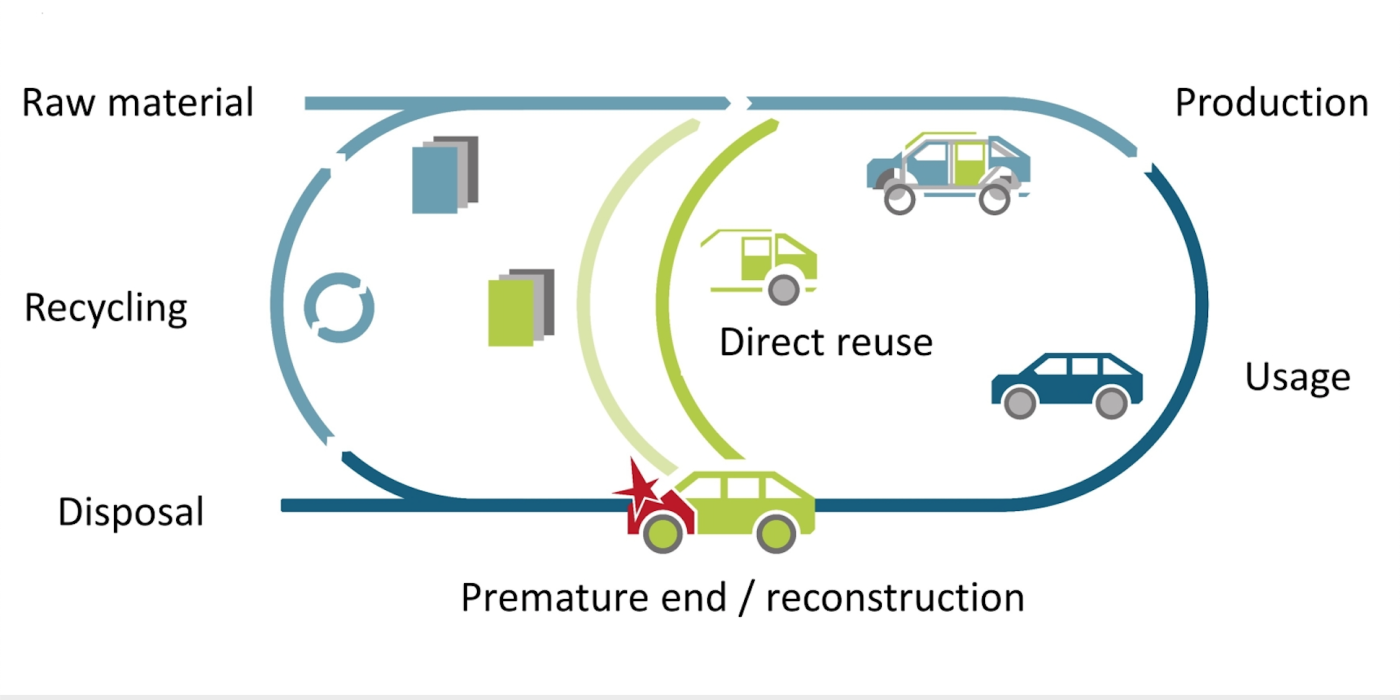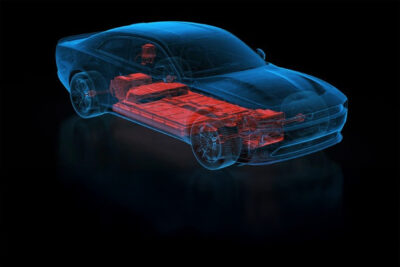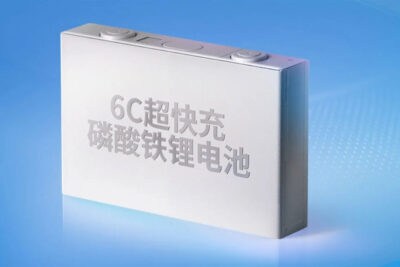Fraunhofer focuses on technology for reusing used EV parts
In Germany, Fraunhofer researchers in the EKODA project (Efficient and Economic Cycle-Oriented Dismantling and Reconditioning) aim to develop an alternative to scrapping used cars or cars that have been involved in accidents.
Currently, used cars and cars involved in accidents are often scrapped with energy-intensive scrapping processes, even if many parts are still functional. The EKODA project enables the optimisation of the lifespans of individual automotive parts to create a more circular economy.
A team of researchers from Fraunhofer IWU in Chemnitz, in the German state of Saxony, are currently developing and optimising an evaluation system that enables optimal re-use of electric vehicle parts before recycling. This aims to address transport industry issues such as scarcity of resources, cost of raw materials, supply chain issues, energy costs and waste disposal. The stated goal is to achieve “sustainable mobility through circular value creation”. One of the core technologies of the EKODA project involves software equipped with AI algorithms to enable efficient, economically viable disassembly and processing.
It EKODA project is backed by a grant initiative from the German Federal Ministry of Education and Research (BMBF). In collaboration with the Fraunhofer IWU, the project consortium includes the Fraunhofer Institute for Environmental, Safety and Energy Technology UMSICHT in Oberhausen and what Fraunhofer IWU says is an array of other industry partners.
The process developed means that components are first examined in a complex test procedure. This involves an evaluation system that makes recommendations on how the components could be further used. Batteries, transmission shafts or gear wheels could thus end up in applications outside the automobile. The core tasks of the EKODA project in the battery sector, for example, includes the dismantling and analysis of parameters such as performance, state of charge and functionality.
For the battery, a camera system first records the type, model designation, power class (in kilowatts) and serial number of the battery pack removed from a used or crashed car and compares them with an internal database. The cover of the battery pack is then removed semi-automatically. Further analyses follow so that a measuring system records the current state of charge, the functionality of the control electronics and the condition of the individual battery cells.
The evaluation software developed by the Fraunhofer IWU uses the data to create a detailed condition profile to make recommendations for further use. For example, a young battery in good condition could be used in a used car, while an older energy storage unit could be used in a “smaller agricultural machine”, for example. Beyond mobile applications, used battery cells can still be good for stationary energy storage applications, such as in homes or at charging stations, in the same way the “cascade” or “ladder” reuse prioritisation system is used in China. However, the use of this process goes beyond establishing appropriate second-life applications for used batteries: other car parts should also be able to be tested and put to secondary use according to the same principle.
“A cogwheel from a defective gearbox could be reused in a refurbished electric scooter, to name just one example,” explains Dr Uwe Frieß, head of the department for body construction, assembly and disassembly at Fraunhofer IWU. The Chemnitz-based researchers are also focusing on parts such as the car body and the drive train so that parts of an electric vehicle’s drive train, such as shafts or cogwheels made of metal or steel, can also be suited for remanufacturing. Used shafts could be used in another mobility application through a reshaping process, for example. “The decisive factor here is that the individual parts are disassembled carefully via a standardised and automated process, as we need to find possible ways of reusing the components right from the start,” Dr Frieß explains.
The work with industry partners also enables taking the evaluation system a step further to look at supply chains, repair shops and car dismantlers so that requirements or requests for spare parts could be incorporated into the evaluation system’s data pool. The Fraunhofer Institute for Environmental, Safety and Energy Technology UMSICHT is simultaneously developing circular business models. These should be able to be implemented effectively in a variety of industries, and business models will be essential in enabling functionality across industries.
German industries are known for their strong expertise in recycling technology and Germany is already a primary supplier of recycling machinery globally. Now the land of engineers is steering focus towards the forseeably lucrative field of reuse technology – which is, of course, also an increasingly important field of geopolitical importance as energy and finite resources inexorably become more limited.




